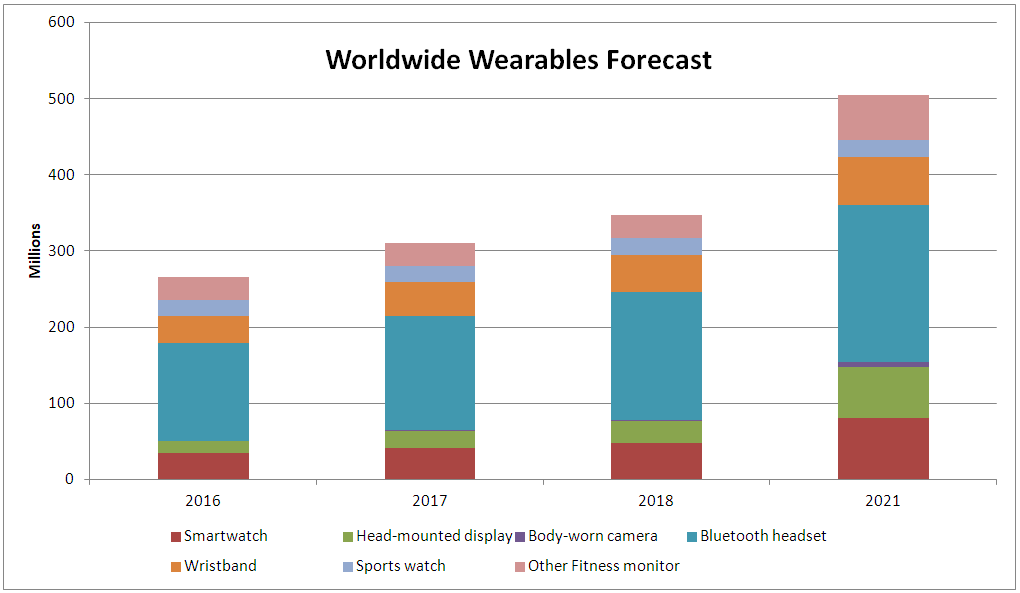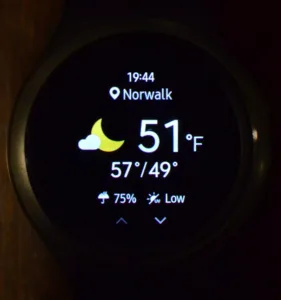For years, smartwatches seemed like a solution for no detectable problem. After all, they did nothing your smartphone couldn’t do, and what they did do was often not very convenient for the user. And they tended to look like ugly small computers on a wristband You may recall that the initial iWatch was a major sales failure after hyper-ventilating prognosticators predicted astronomical sales. Embarrassing.

If smartwatches were not going to do more than your smartphone could do, they would have to be significantly more convenient, at least somewhat stylish, and a lot more fun than your phone. (And phone fatigue is setting in. We need our phones, but many of us no longer love them.)
So, in addition to the appropriate sensors, a good processor, and excellent cellular and/or Bluetooth connectivity, successful smart watches need an excellent OS with an intuitive and easy-to-operate interface and a really good display.
Gartner has forecast that smartwatches will hit 41.5 million with Apple taking almost a third of the market, so close to fourteen million watch sales.
 This forecast for wearables came from Gartner. Image:Meko
This forecast for wearables came from Gartner. Image:Meko
We have suggested in this space that traditional watch makers are better positioned to make high-volume smart watches than are phone and computer makers. That prediction hasn’t come true yet, but Fossil made IDC’s top 5 sellers with 1 million units, up 218% from Q2’16. Fossil has been struggling financially, but is basing its hopes for a turn-around, in part, on a significant increase in Android Wear smartwatches in 2018.
IDC’s Jitesh Ubrani said,
“For years, rudimentary fitness trackers have acted as a gateway to smartwatches and now we’re at a point where brands and consumers are graduating to a more sophisticated device.”
I have been using a Samsung Gear S2 for the last couple of months and, somewhat to my surprise, I find I’ve become a fan. The seamless way the Gear communicates with my Galaxy S7 phone is part of it, as is the intuitive interface that involves swiping, touching, and/or twisting the watch’s round bezel, which is part of the Tizen OS. (The Gear S2 has been discontinued and is available at sharply reduced prices. I never said I wasn’t a cheapskate.)
But a significant part of the satisfaction in using the Gear S2 is the 1.2″ diameter 360 x 360-pixel OLED touchscreen. When you are presenting text on a small screen and emulating analog watch faces, you need a high-resolution, high-contrast display with saturated colors, and the S2 display qualifies. (It appears that the same display is used in the S2’s successors.) I assume this display is made by Samsung, but LG Display has one that has the same dimensions and pixel format. Smartwatches have small batteries and their displays can’t be on all the time if the battery is to last a day or so. The S2’s display automatically turns on when the sensors determine that you’ve raised your wrist into a position for looking at the watch.
A round OLED display is well suited to a smartwatch’s requirements. (Photo: Ken Werner)
I find I use the S2 for weather reports and I appreciate the ability to receive phone calls even when I can’t get to my phone. Initially I didn’t see the use case for that, but then my wife Arlette called me when I was waist deep in the Housatonic River trying to catch a trout. Similarly, receiving texts on the S2 is useful. You can select the apps on your phone you would like to have send notifications to the S2. News headlines and lede paragraphs are a highly readable white on black. I appreciate the automatic heart-rate monitoring and the vibration that tells me I’ve been sitting too long and that I should get up and exercise. (There! It just went off now.) I have not given the turn-by-turn navigation app a serious work-out, but I will.
I intend these comments to suggest that good smart watches really have become useful and enjoyable, contrary to what I have written in the past. (I am not suggesting that the Gear S2 is superior to Apple’s watch or Huawei’s or Fossil’s or Samsung’s newer models since I have no experience with them.) – Ken Werner
Ken Werner is Principal of Nutmeg Consultants, specializing in the display industry, manufacturing, technology, and applications, including mobile devices, automotive, and television. He consults for attorneys, investment analysts, and companies re-positioning themselves within the display industry or using displays in their products. He is the 2017 recipient of the Society for Information Display’s Lewis and Beatrice Winner Award. You can reach him at [email protected].

